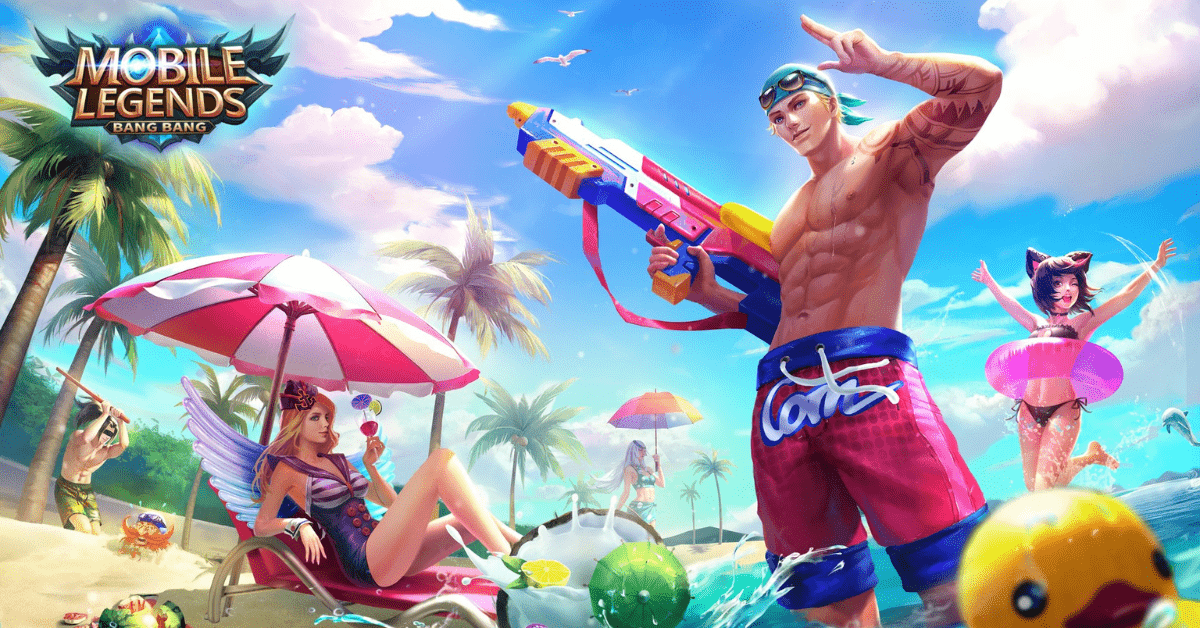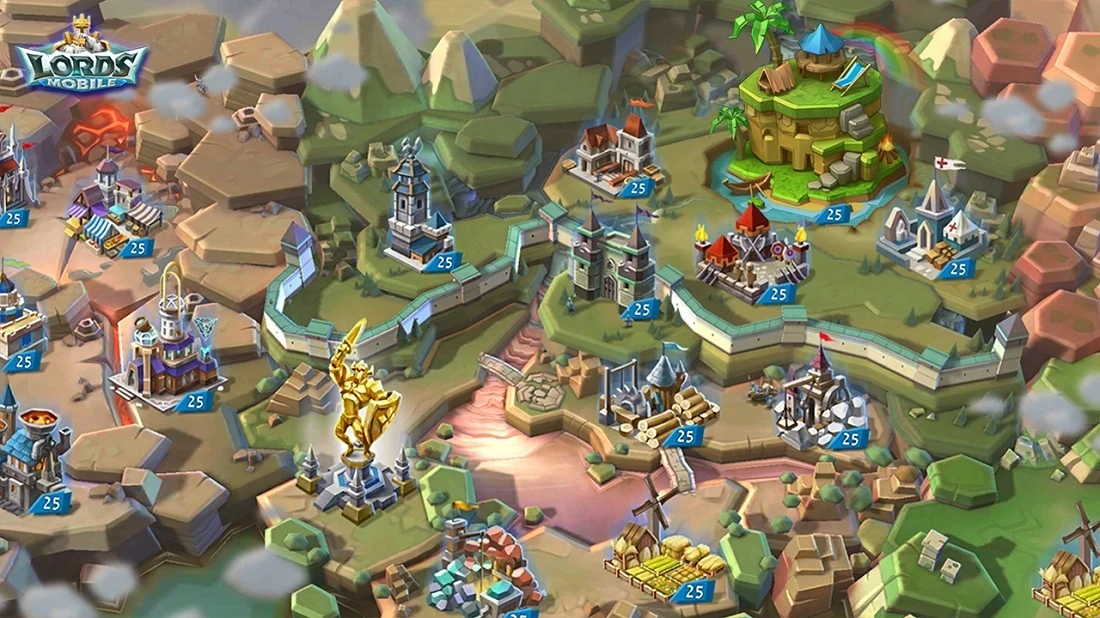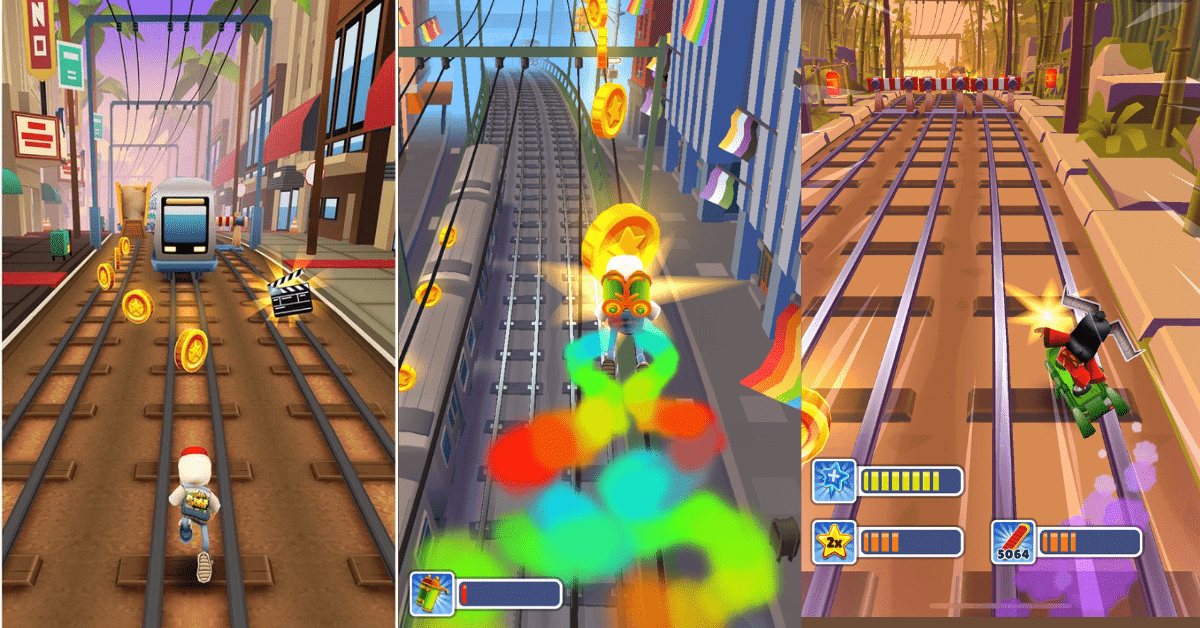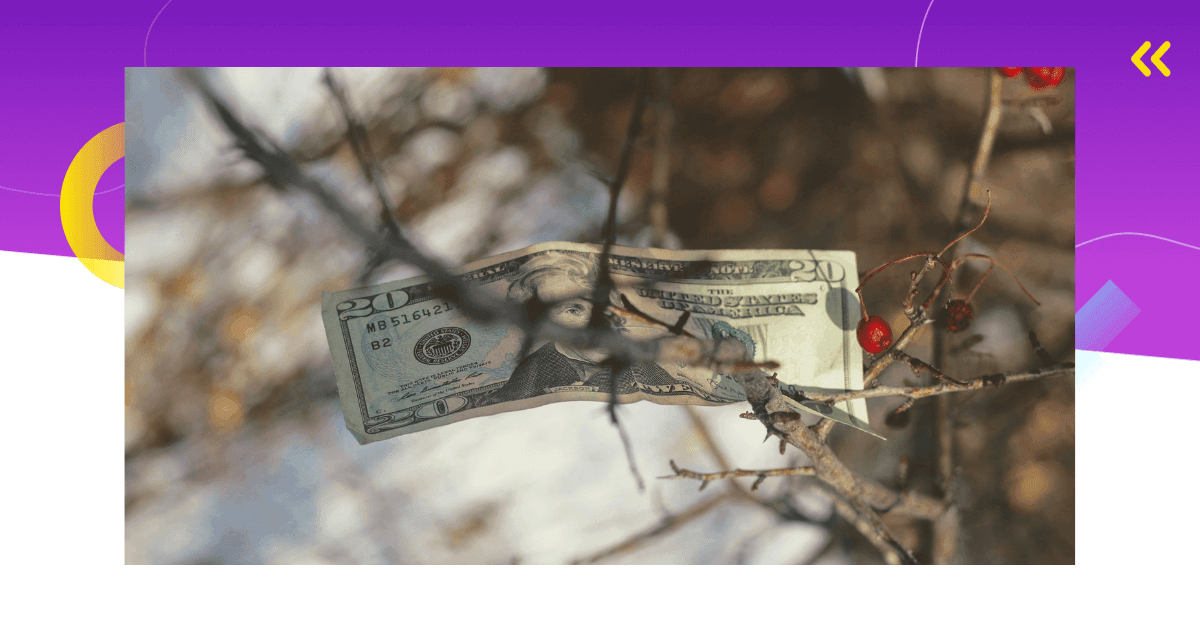Live events are the engine driving engagement, retention, and revenue in the mobile gaming industry.
They are more than just a live ops tool; they’re an essential strategy that offers dynamic experiences that not just attract users, but transform them into loyal players. The impact of live events is multifaceted – they excite, reward, and foster communities, ultimately boosting your game’s success.
And they’re key for making a mobile game sustainable and increasing its lifecycle.
But why are live events so powerful? How do they nurture engagement and ensure user retention?
In this article, I’ll answer all of these questions, offer practical tips to optimize your live events, and explain their role in fueling revenue growth.
Why Players Love Live Events?
Live events resonate with mobile gamers for a myriad of reasons. Let’s delve into some of the core aspects that make them a hit with the mobile gaming community.
Scarcity and FOMO
The concept of scarcity – limited availability – instills a sense of urgency in players and compels them to participate in live events. The fear of missing out is a potent psychological motivator.
When players perceive that they have a fleeting opportunity to engage in a unique event or to gain exclusive rewards, they are more likely to jump in, eager not to miss out on the exclusive offers.
This urgency can effectively drive engagement and prompt players to spend more time, and possibly money, on your game.

Experiencing New Storylines
Players appreciate the novelty and unpredictability that live events bring to their gaming experience.
New narratives and plot twists introduce a fresh perspective to the game, keeping it exciting and avoiding stagnation. Live events often feature novel storylines that can revive interest in your game and draw back even those who may have disengaged.
Trying Out Unique Activities and Game Features
Live events often introduce novel mechanics and game features that aren’t available in the regular gameplay. This gives players an opportunity to enjoy a fresh gaming experience within a familiar environment.
Players can explore these new dynamics at their own pace, spurring engagement as they delve into these innovative elements.
Access to Exclusive Items and Characters
Another major attraction of live events is the opportunity to gain access to exclusive items, characters, or abilities that are not available in the regular gameplay.
The allure of exclusivity can be a strong pull for players. This not only incentivizes participation but also fosters a sense of accomplishment when players unlock these rare elements.

Exciting Rewards
Live events often come with the promise of rewards.
These rewards could range from in-game currency to rare items, providing a strong incentive for participation. The prospect of earning these bonuses can spike engagement, as players invest time and effort to meet event objectives and claim their prizes.
Furthermore, rewards can increase player satisfaction and create positive associations with your game, fostering long-term player loyalty.
Time-Limited Boosters
Time-limited boosters provided during live events can offer players a temporary advantage in the game and enhance their capabilities or chances of success.
These boosters encourage players to maximize their play during the event duration to reap the benefits of these temporary powers. The thrill of amplified game prowess, even for a short period, adds a fresh layer of excitement to the gaming experience.

What’s in It for Game Developers?
Put simply, by implementing live events in your mobile game, you’ll see major improvements in the three mobile game pillars – engagement, retention, and monetization.
More Engagement
Live events provide fresh, dynamic content that sparks player curiosity and interest.
They introduce new challenges and features, driving players to engage more deeply with your game as they navigate through novel narratives and gameplay. As live events typically involve time-bound activities and rewards, they induce players to spend more time in the game to maximize their gains.
This increase in active game time significantly boosts engagement metrics like session length, playtime, and session depth.
Better Retention
By offering unique and recurring experiences, live events give players more reasons to return to your game. They instill a sense of anticipation, with players looking forward to new events and the exclusive rewards they bring.
This enhances player loyalty and reduces churn.
Additionally, live events that incorporate community features, such as leaderboards or cooperative challenges, can foster a sense of social belonging. That further strengthens player ties to the game and improves long-term retention.
Boosted Monetization
Live events offer a variety of monetization opportunities.
Players can be incentivized to make in-app purchases to gain an edge in event challenges or to secure exclusive event-related content. Limited-time offers and exclusive bundles tied to live events can also stimulate player spending.
Further, successful engagement and retention driven by live events translate into longer player lifetimes, which provides even more opportunities for monetization. Live events, therefore, serve as a strategic lever to increase both direct and indirect revenue for game developers.
Higher ARPDAU
More specifically, as live events stimulate engagement and monetization, they inherently drive an increase in one of the most important monetization metrics – ARPDAU or average revenue per daily active user.
Live events entice users to log in and participate more frequently, thereby increasing the number of daily active users (DAU). At the same time, the unique experiences and exclusive rewards offered by these events incentivize in-app purchases. This combination of a higher DAU and increased player spending directly amplifies your ARPDAU.
Live Events in Popular Mobile Games
Now that you know all the benefits of live events, let’s explore how some of the most successful games in the gaming industry leverage live events to engage their user base and drive success.

Live Events in Fortnite
Epic Games’ Fortnite has been a trailblazer when it comes to live events, utilizing them to keep the game fresh, exciting, and at the forefront of pop culture.
Fortnite’s live events are typically grand spectacles, tied to both the game’s ongoing storyline and real-world pop culture events.
These events often alter the game’s map, introduce new items, or add unique mechanics.
For instance, one of their most iconic live events involved a live concert by the popular artist Travis Scott, which drew over 12 million participants. These larger-than-life events bring players together in real-time, fostering community and increasing player engagement and retention.

Live Events in Clash of Clans
Supercell’s Clash of Clans uses live events in a more traditional way, with limited-time challenges that offer various rewards. They use events to introduce new troops, spells, or other gameplay elements that players can try out.
Live events in Clash of Clans often involve special discounted upgrade costs or faster building times, which incentivizes players to engage with the game more during the event period. This effectively promotes player activity and monetization, as players may spend more to take advantage of these limited-time benefits.

Live Events in FIFA Mobile
FIFA Mobile by EA mirrors real-world football events with its live events. That creates a strong connection between the game and reality.
They host seasonal events, such as the Team of the Season event, where players can participate in challenges to earn special players from the various real-world football leagues.
This strong tie-in with real-world events helps keep the game relevant and exciting for players. It also offers EA the opportunity to monetize these events, as players may be willing to spend more to acquire their favorite real-world football stars.

Live Events in Homescapes
In the casual game Homescapes, Playrix utilizes live events to introduce new mini-games and tasks for players. These events provide a fresh break from the regular gameplay and offer players new challenges as well as the opportunity to earn special rewards.
There’s also a competitive aspect in certain events.
For instance, in the Cookie Madness event, players compete with other players to earn cupcakes and other special rewards. Such events keep players engaged and incentivize them to log in regularly to complete the tasks before the event ends.

Live Events in Cooking Fever
In Cooking Fever by Nordcurrent, live events often involve time-limited challenges where players can earn unique rewards, such as new recipes or kitchen equipment. These events often introduce new mechanics or levels that provide players with a novel gameplay experience.
An example is the Sports Bar event, which introduced a new restaurant with a unique set of dishes and challenges. These types of events incentivize players to play more and master new tasks.
10 Tips for Running Successful Live Events in Mobile Games
Running a successful live event requires more than just offering exciting rewards or introducing novel gameplay mechanics. It involves strategic planning, creativity, and keen attention to your player’s needs.
Let’s consider some actionable tips that will help you capitalize on live events.

Come Up with Unique Themes
A unique and appealing theme can make your live event stand out and draw player interest. Themes could be linked to real-world events (like holidays or sporting events), popular culture, or even an extension of your game’s lore.
Ensure your theme is well-integrated into the event’s narrative, activities, and rewards, and creates a cohesive and immersive experience for your players. This attention to detail can elevate your live event and help it resonate more strongly with your player base.

Set Up an Event Calendar
The next step is designing an event calendar
An event schedule is essential for maintaining player interest and engagement. It gives players a clear roadmap of what to expect and when, fostering anticipation and regular engagement. Whether it’s the release of new challenges, the introduction of new characters, or reward distribution, keeping your players informed will ensure they stay engaged and excited.
Consistency in your event schedule also helps players develop a habit of regular play, which improves long-term retention.
An event calendar is also helpful to you and your team to keep track of all the events and schedule them strategically.
It’s essential to have various types of events and to keep the calendar full at all times. Also, it helps to check out event calendars from other games. A great tool for that is Playliner (featured in the screenshot above).
You could consider weekly or bi-weekly mini-events that require less commitment from players but still offer engagement and rewards. These can be complemented with larger, monthly events that offer more substantial content and rewards, creating a rhythm that keeps players regularly engaged without overwhelming them.
Mix It Up
As I already hinted, it is good to offer a mix of different types of events.
This could include:
- competitive events where players compete against each other for rewards
- cooperative events where players work together towards a common goal
- solo events where players can progress at their own pace
Varying the type of events not only provides diverse experiences that cater to different player preferences but also prevents monotony.
The thrill of competition, the camaraderie of cooperative play, or the relaxed pace of solo events can each appeal to different player types, ensuring you maintain a wide appeal.

Make Events Easy to Find
One of the biggest mistakes developers make is filling up their events calendar, but then burying events deep in the app so that players don’t even know they’re happening. Your live event can be the most exciting thing happening in your game, but it won’t matter if your players can’t find it.
Ensure your event is prominently displayed in your game’s UI and that players can access it easily.
On top of that, use pop-ups and push notifications to guide players to the event, but make sure they are non-intrusive and don’t disrupt the player’s gameplay experience. An event banner or dedicated button can also be helpful to ensure your event is always just a tap away for interested players.
Integrate Event Progression
A sense of progression can add an extra layer of engagement to your live event.
By completing challenges or tasks, players should feel like they are moving towards a goal or improving in some way.
This could be through a leveling system, a progress bar, or even narrative progression in the event storyline. This gives players a clear objective to work towards during the event, keeping them motivated and engaged.
Additionally, progression provides regular milestones where you can reward players, which adds another layer of incentive to participate.

Incentivize Event Participation
Rewards are a fundamental aspect of live events.
They can be the carrot that keeps players engaged, pushing them to invest time and effort into your game.
But it’s not just about offering rewards.
It’s about offering the right kind of rewards that truly incentivize your players.
For instance, leaderboard rewards can fuel competition, making players strive to outperform others for top spots. Social sharing bonuses can motivate players to spread the word about your game. Collaborative rewards can build a sense of community and foster cooperation among players.
Adding social features like chat or team-based activities can further enhance the social aspect of your game, giving players more reasons to keep coming back.
Remember, the goal is to provide incentives that resonate with your players and motivate them to participate actively and regularly in your events.
Make It Competitive
Competition can be a driving force for engagement in your live events. It creates a sense of challenge and achievement, and pushes players to put in their best efforts.
This could involve PvP battles, leaderboards, or any other form of player ranking.
But remember, competition needs to be balanced.
While top players should be recognized and rewarded, ensure that your events are structured in a way that less experienced players still feel they have a chance to win.
This balance will keep all your players motivated and engaged.

Reveal New Storylines with Live Events
Live events can serve as an excellent platform to progress or expand upon your game’s storyline. New narratives can pique player interest and add an element of surprise and curiosity. This can be particularly effective in narrative-driven games, where players are already invested in the storyline.
Revealing new storylines through live events keeps your game fresh and dynamic.
It makes each event feel like a unique chapter in an unfolding story, creating a continuous thread of interest that keeps players engaged and looking forward to what happens next.
Ensure these storylines are well-integrated with your game’s overall narrative to maintain consistency and immersion.
Offer Event-Based In-App Purchases
In-app purchases can significantly boost your monetization during live events. Here’s how you can take advantage of that.
Offering event-based in-app purchases, such as event-exclusive items or currency, can create a sense of urgency and exclusivity. That, in turn, motivates players to make purchases.
For instance, you could offer event-themed skins, exclusive powers, or special event passes that grant players access to additional content or rewards. Ensure these purchases provide value and enhance the event experience to maintain player satisfaction and trust.
Another good strategy for boosting revenue during live events is doing sales.
Time-Limited Sales
When you offer an item or bonus available for a limited period, it can motivate immediate action, making players more likely to complete a purchase.
You can further enhance this sense of urgency by incorporating a countdown timer or a ‘remaining stock’ indicator. These strategies can be highly effective at driving impulse purchases during your live events.
Offer VIP Access
Offering VIP access is another way to incentivize in-app purchases during live events.
This could involve access to exclusive event content, early access to the event itself, or special privileges within the event, such as VIP leaderboards or additional event challenges.
VIP access creates a sense of exclusivity and prestige. Essentially, it makes players feel special and valued. And that can be a powerful motivator for players who are willing to pay for a superior event experience.
However, remember to balance this by ensuring non-VIP players still have an enjoyable and rewarding event experience.

Introduce Limited-Edition Collectibles
Limited-edition collectibles can add an exciting layer to your live events.
These can be items, characters, or any other form of collectible that players can strive to acquire during the event. The limited-edition nature of these items creates a sense of scarcity and urgency, which can drive player engagement and incentivize in-app purchases.
Moreover, these collectibles can serve as a token of participation and create a sense of achievement and pride for the players who manage to collect them. This not only boosts player satisfaction but also fosters a deeper connection with your game.
Character collection, in particular, is very effective.
These can be completely new characters introduced during the event or existing characters with unique event-themed skins or abilities.
Ensure these exclusive characters offer something unique – this could be in their design, abilities, or in how they interact with the game world. They should be desirable, offering clear value that motivates players to acquire them.
Use Live Events for Advertising
Live events are not only useful for maximizing key mobile game KPIs and maximizing revenue, but you can also use them for advertising. They’re an excellent opportunity for user acquisition.
By showcasing your game’s unique events through advertising and social media promotions, you can attract more players to your mobile game.
When it comes to paid advertising, focusing on the uniqueness and exclusivity of your live events can help your game stand out. You could create visually engaging ads that showcase event-specific gameplay, exclusive items, or limited-edition characters.
Remember, your goal is to portray your event as an exciting, can’t-miss experience. Use compelling calls to action in your ads to motivate potential players to download your game and participate in the event.
Social media platforms are another powerful way to amplify your live events.
Social Media Marketing
By creating engaging content around your events, you can foster community and excitement among potential players. This could be teasers revealing upcoming event content, behind-the-scenes peeks into the development process, or player spotlights showcasing top performers in past events.
You can also encourage your existing players to share their event experiences on social media. This creates a sense of community and serves as a form of organic promotion, as potential players see the excitement and engagement in your player base.
Live Events: A Summary
As we navigate through the ever-evolving landscape of mobile gaming, it’s clear that live events are more than just a trend – they are a cornerstone of successful game design and marketing strategy.
They not only deliver an immersive and engaging gaming experience for players but also offer game developers a robust strategy for enhancing engagement, retention, and monetization.
Embrace the power of live events and unlock a new level of success for your mobile game!







Comments